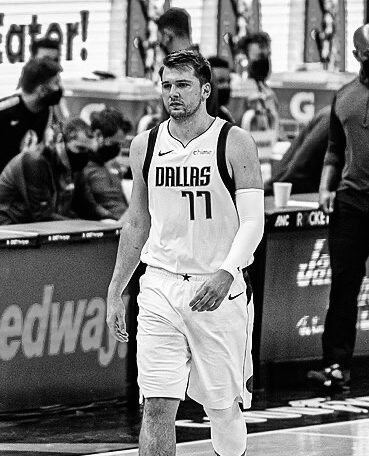On a seemingly average Saturday, the Los Angeles Lakers and Dallas Mavericks finalized what ESPN called “perhaps the most shocking trade in NBA history.” The Lakers traded ten-time All-Star Anthony Davis for Slovenian phenom Luka Doncic. What makes this trade befuddling is the lack of rumors that led up to it. In fact, Davis himself had no idea that he was being traded until minutes before it was officially announced. Doncic was equally “shocked” by the news that he would be a Laker after finding out the night the trade was made public.
But the reason that the trade is garnering so much attention doesn’t stem from the murkiness surrounding it. It has to do with the actual components of the trade. The Mavericks have made an atrocious trade that has prompted huge protests and vandalism outside their arena. Basketball writer Michael Pina says that the trade is “as bad as it is mystifying as it is comical”. NBA player Josh Hart called the deal “highway robbery” for the Lakers. The only thing that nearly all of America has seemed to be in agreement with lately is that the Mavericks have made an undeniably terrible decision (Except for NBA great Charles Barkley, who argues that the Mavericks came out on top in the trade).
Why is the trade such an awful one? Doncic is in the prime of his career, and Davis, well, isn’t. Davis was starting in the NBA when Doncic was 13 years old. Now, Doncic is in the limelight, and Davis is in the final years of an industrious career. Let’s take last year, for example. Davis, by all means, had a great season. He averaged 24.7 points per game, second on the Lakers to Lebron James, and had a team-leading 12.3 rebounds per game. But Doncic was otherworldly. He led the NBA in points per game. He led all point guards in rebounds per game. Doncic scored more than 40 points 10 times throughout the season, his highest total coming on January 26th, when he racked up 73. Davis scored more than 40 once.
It’s difficult to say what made the Mavericks make the trade. The Mavericks also traded away fellow European Maxi Kleber and journeyman Markieff Morris, and they received promising prospect Max Christie and the Lakers 2029 first-round draft pick. But that doesn’t explain it. The Mavericks had concerns over Doncic’s fitness. The team wanted him to weigh around 245 pounds, and he weighed nearly 270 at the time of the trade. Doncic also has a very high salary, and he wasn’t on great terms with the team prior to the trade. But none of these reasons justify trading away the lynchpin of your franchise. As Sports Illustrated puts it, “There is no replacing a player of Luka Doncic’s magnitude.”
In Doncic’s first game as a Laker, it was clear that Los Angeles made the right decision. Doncic, though he didn’t have a monster game, immediately felt the warmth of the Lakers fans, which made a big impact on him. He said, following his debut, “I can’t remember the last time I was nervous before the game, but once I stepped out on the court it was fun being out there again. It felt amazing.” On the other side of the trade, Anthony Davis immediately strained his adductor, resulting in a 3 week recovery period. So at the end of the trade, at least in the short term, Doncic is in the prime of his career and playing for a fanbase that adores him, and Davis is sidelined on a team that’s seemingly falling to pieces. It seems like the Lakers won the trade.
One of the other beneficiaries of the trade was the NBA. In the midst of the end of the NFL season, right before the Grammys, and right after the inauguration, much of the nation was talking about basketball. Trades involving well-known players like Andrew Wiggins and Jimmy Butler, along with rumors surrounding Kevin Durant, only furthered these discussions. So in the end, while the Lakers got the better side of the deal, it might have been the NBA that emerged with the greatest gain from the Doncic and Davis blockbuster trade.



